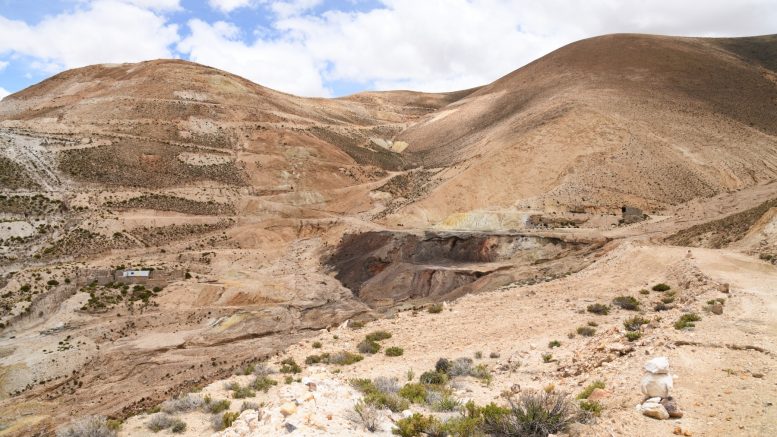Silver Elephant Mining (TSX: ELEF; US-OTC: SILEF) has announced the results of a preliminary economic assessment for its Gibellini vanadium project in Nevada, demonstrating an after-tax internal rate of return of 25.4% and net present value of US$127.9 million.
The Gibellini project is envisioned as an open-pit, heap-leach operation in the state’s Battle Mountain region, about 25 km south of Eureka. Once in production, it would become the first primary vanadium mine in the United States.
Silver Elephant Mining recently proposed to spin off the vanadium project, along with its Minago nickel project in Manitoba and various royalty investments, as part of a reorganization of the company to focus on precious metals exploration.
According to the PEA, the Gibellini project will have an initial capital cost of US$147 million (including contingency) and generate cumulative cash flow of US$260.8 million (after tax), with a payback period of 2.5 years.
Over a projected 11-year mine life, average annual production will be 10.2 million pounds of V2O5 at an all-in sustaining cost of US$6.04 per lb. The project has an estimated strip ratio of of 0.18 to 1 (waste rock to leach material).
The early stage study’s base case assumed a vanadium price of US$10 per lb., and Silver Elephant states that the project is well positioned to benefit from a rising price environment. A 30% increase in the vanadium price to US$13 per lb., relative to the base case, translates to a 42% internal rate of return and a US$295.4 million net present value, the study showed.
As of August 24, the European price of vanadium pentoxide (98%) was US$9.60 per pound.
The Gibellini project consists of the Gibellini deposit and the Louie Hill deposit, 2 km to the south of Gibellini. It also consists of the Bisoni-McKay deposit, which it acquired in September 2020. Bisoni is about 13 km to the south of Louie Hill.
Gibellini has measured and indicated resource of 22.95 million short tons grading 0.29% V205% for 131.3 million lb. of contained V2O5, and an inferred resource of 14.97 million short tons grading 0.18% V205 for 52.3 million lb. V205. The Louie Hill deposit has inferred resources of 7.52 million short tons grading 0.28% V205 for 41.5 million lb. V205 and Bisoni-McKay inferred resources of 19.85 million short tons grading 0.34% V205 for 134.02 million lb. V205.
In July, Silver Elephant submitted its notice of intent with the Federal Register to prepare an environmental impact statement (EIS) for Gibellini.
According to the company, the project conforms to the green energy initiatives of the current U.S. administration, and the EIS record of decision is expected in early 2022.
Should it be selected by the Bureau of Land Management, Gibellini would be the first mine in the U.S. that will be completely powered by renewable energy.
The U.S. government designated vanadium a critical material in 2018 due to its importance to the military and energy storage sectors, and the fact that there is no domestic production. Most of the supply comes from Russia, China and South Africa.
Silver Elephant forecasts that a structural vanadium deficit will emerge by 2025, in parallel with the rising popularity of the vanadium redox flow battery.
The company has a market cap of $53.3 million.


Silver Elephant’s Gibellinni vanadium project would not be the first primary vanadium mine in the United States. The first primary vanadium mine in the United States is located near Hot Springs, Arkansas and was started in the late 1960’s by Union Carbide Corporation. I personally performed engineering services, including mine planning, there in the 1970’s while an employee of Union Carbide Corporation. I was also responsible for the Gibellinni and Bisoni – McKay properties, which were also held by Union Carbide Corporation during that period.
W T Cohan, P.Eng.